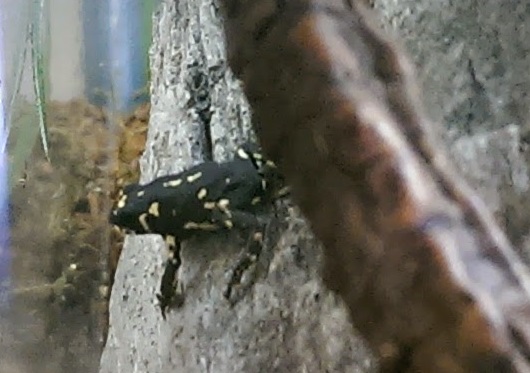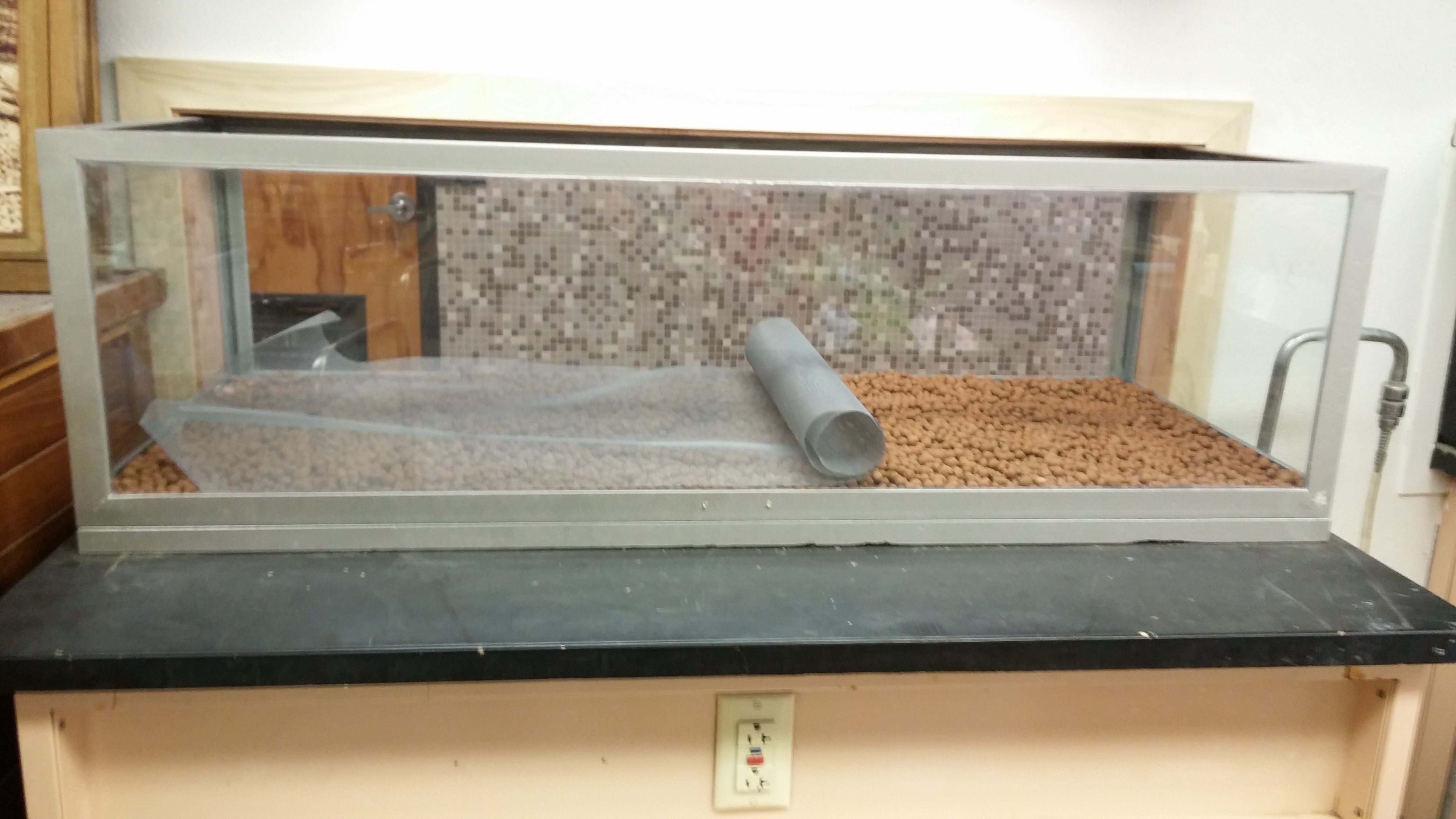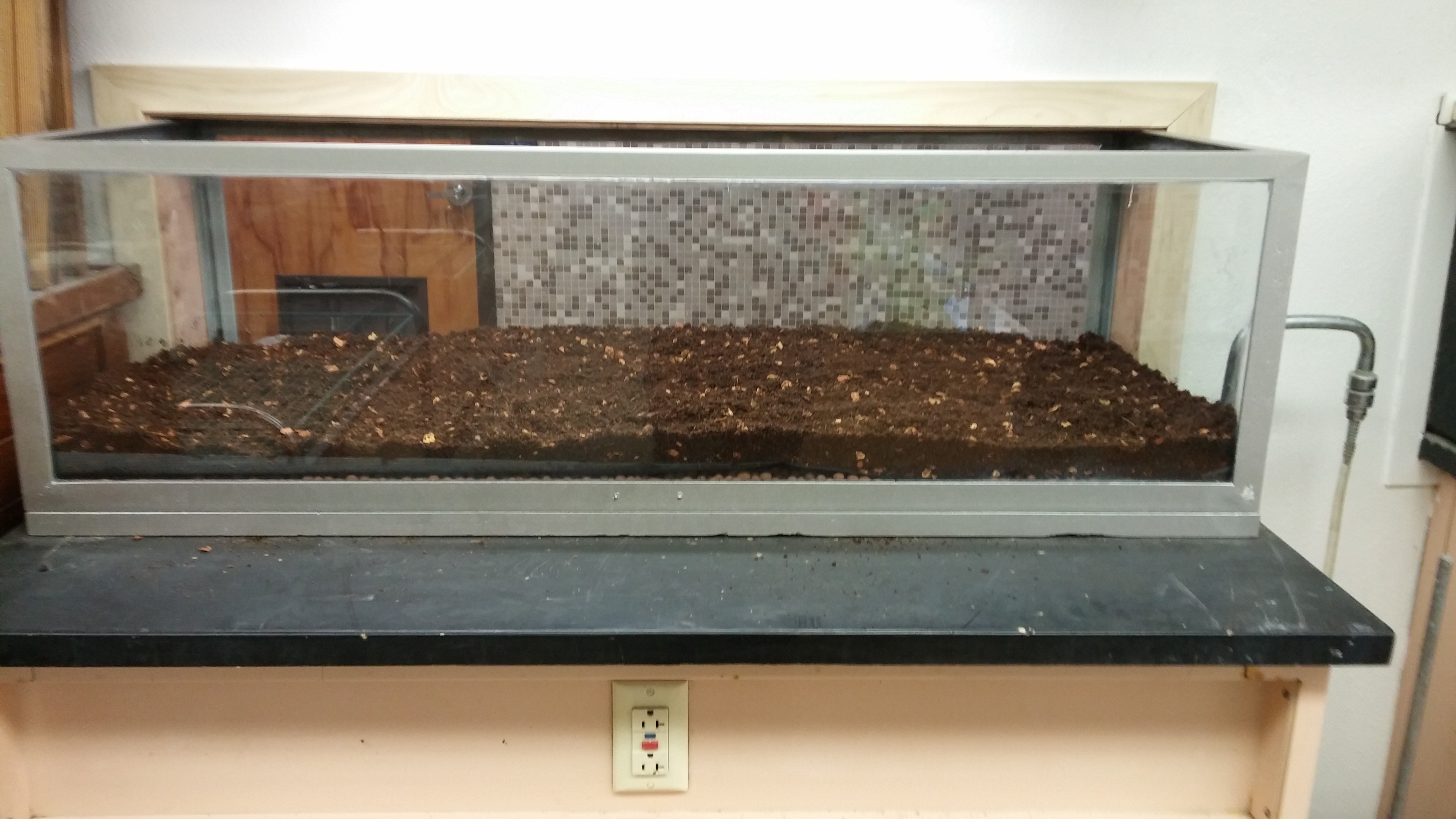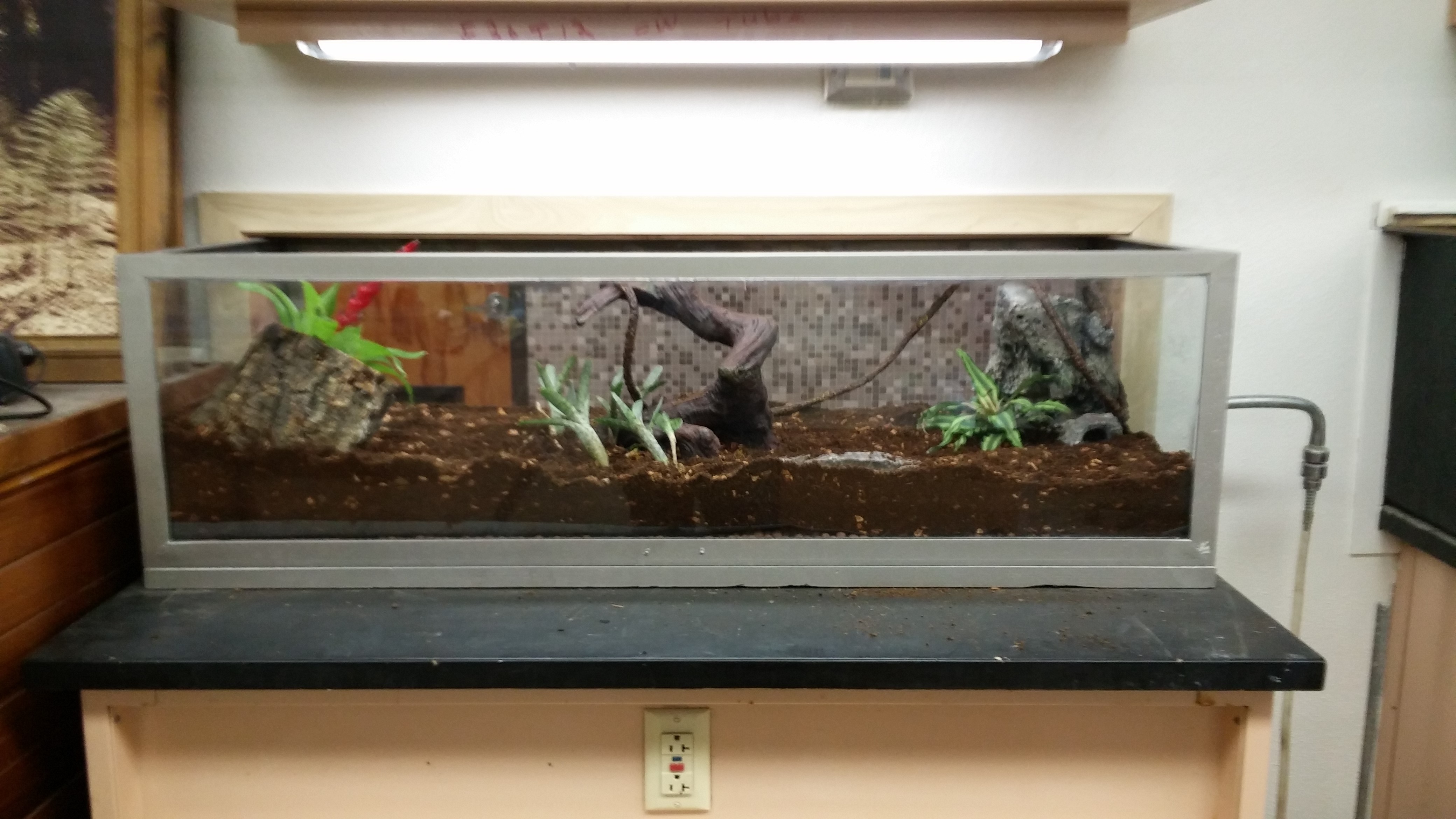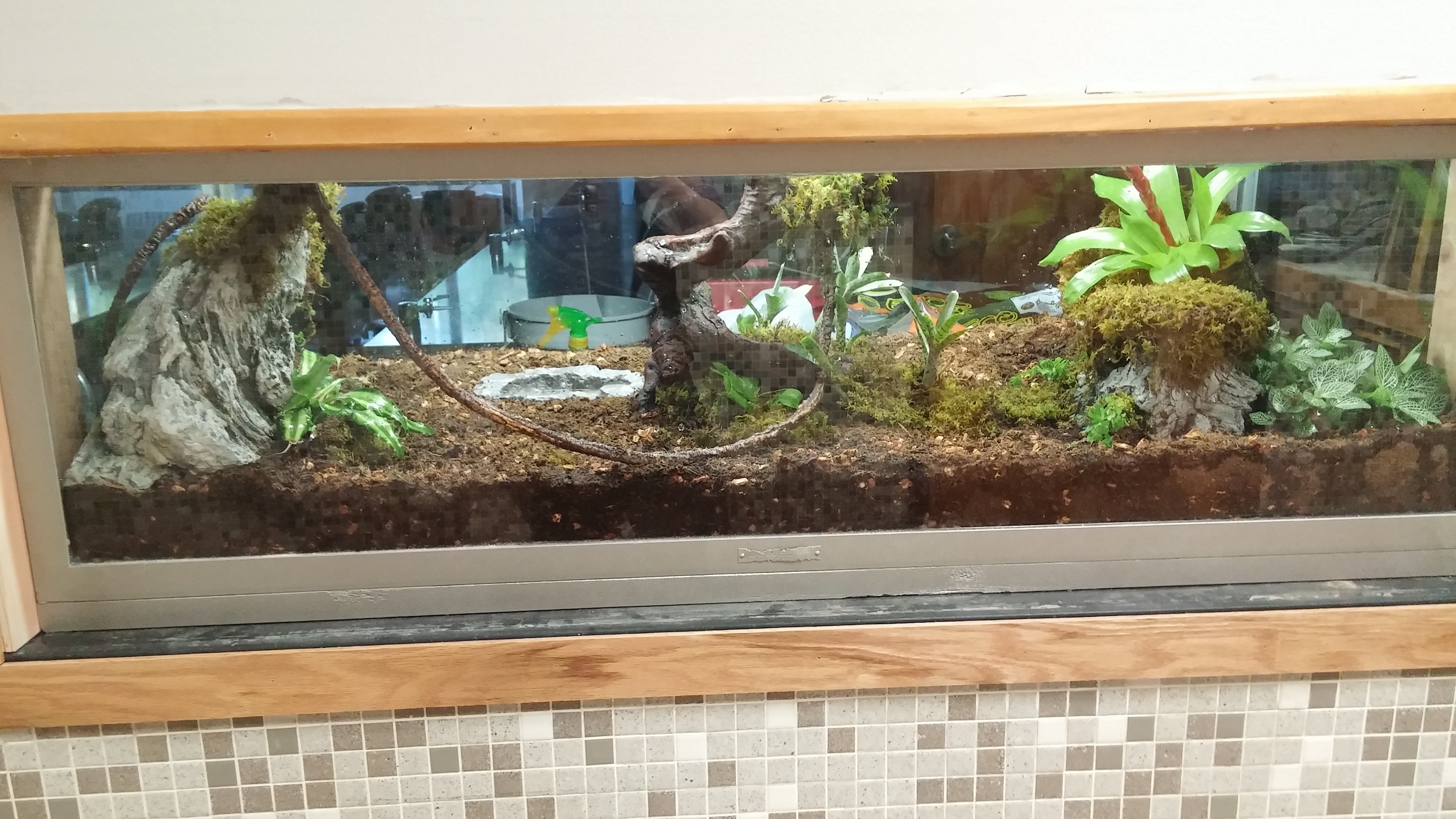Tropical Terrarium
Located across the hall from the Biology Main Offices
Creatures in the Tropical Terrarium
Scientific Name: Melanophryniscus stelzneri
Ecology/Habitat: Bumblebee toads live in grassland habitats, breeding in pools of freshwater, often temporary ones. The species copes well in agricultural environments, especially rice paddies, probably because of the water. They breed quickly, sticking their egg masses to the stalks of any suitable plants in the breeding pool. The species is known to be from Argentina, although its range may stretch into neighboring countries, notably Bolivia.
Color/Pattern: All bumble bee toads are primarily black with yellow patches. The amount and size of these yellow patches can vary widely, as can the intensity of the yellow coloration. Some older animals appear almost white and black. All wild caught bumble bee toads have red to orange/red coloration on the bottom of their feet and rump.
Learn More
Frogs do not drink water, they absorb it through their skin, therefore a water dish should be provided that is large enough for the animal to easily get in and out of. Maintain the humidity at 60-80% most of the time as they are less active and hide when it becomes much higher or lower.
Learn More
Tropical Terrarium Plants
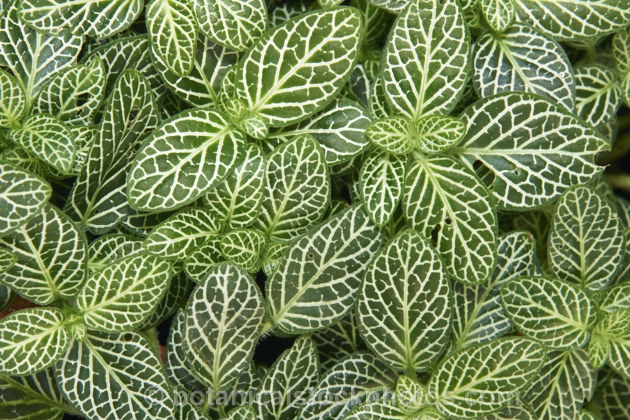
Native to tropical rainforests in South America (Columbia and Peru). Plants are typically grown to showcase the striking foliage. Verschaffeltii Group plants feature dark green leaves with pink/red veins.
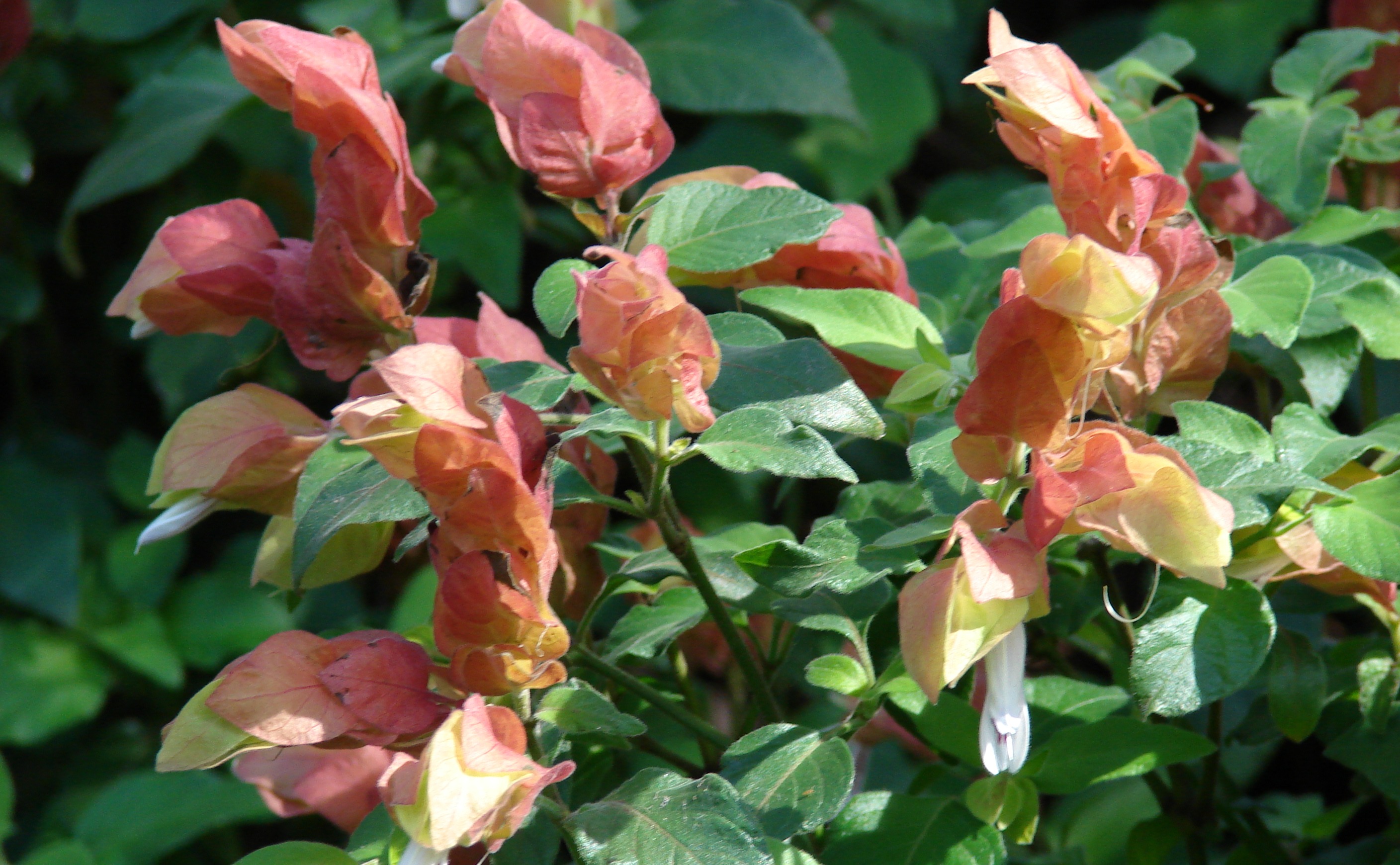
Native to Mexico. The flowers of this plant emerge from bracts that form off the stems. The bracts start out white, but with more sun exposure they turn anywhere from pale pink to deep salmon. A chain of bracts will continue to grow until it falls off in most cases; thus the chains can grow anywhere from a few inches to nearly a foot in length.
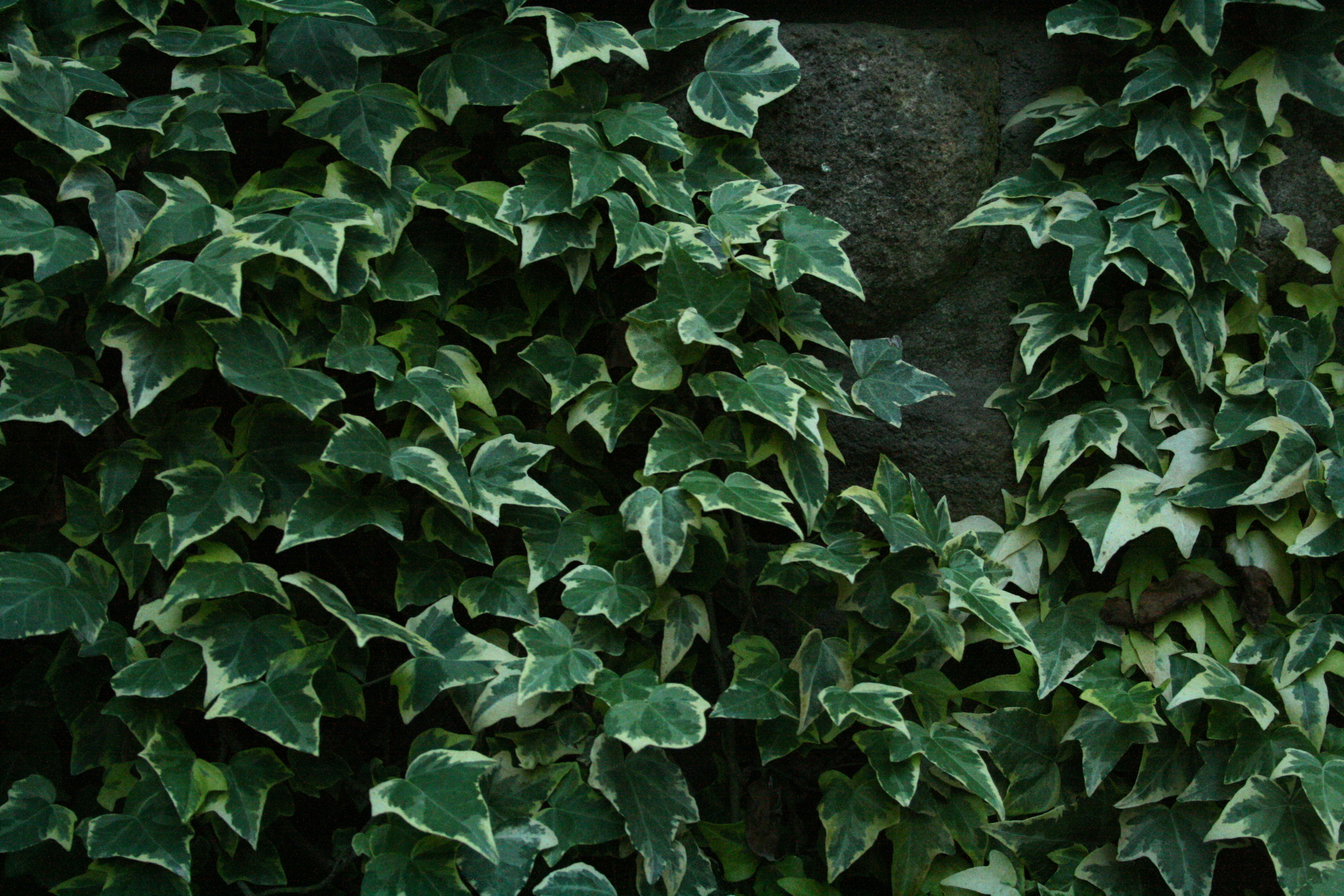
Hedera helix (English Ivy) -Native to Europe, W. Asia and N. Africa. English ivy was introduced by settlers. It spreads vegetatively or by seed. It is still commonly used by homeowners and landscapers as a low maintenance form of ground cover.
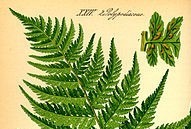
Athyrium filix-femina (Common Lady Fern)- Grizzly bears like to eat Lady Ferns as a major food source. Elk will also eat it also. Native Americans had many uses for Lady Ferns. They used lady ferns for drying berries on, and covering food.
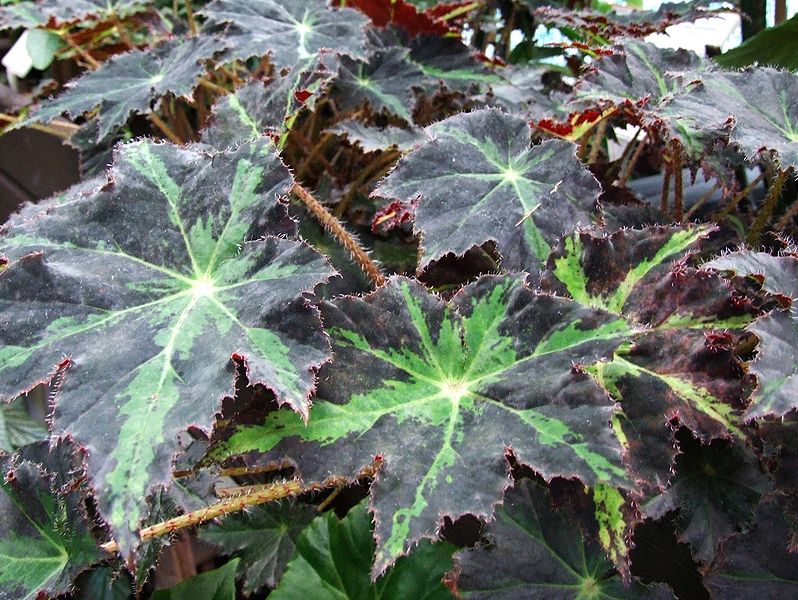
Begonia heracleifolia (Star Begonia) is Native to Mexico. This wonderful begonia was first discovered in Mexico in the 1830s, with the specific epithet referring to the leaves resembling the genus Heracleum.
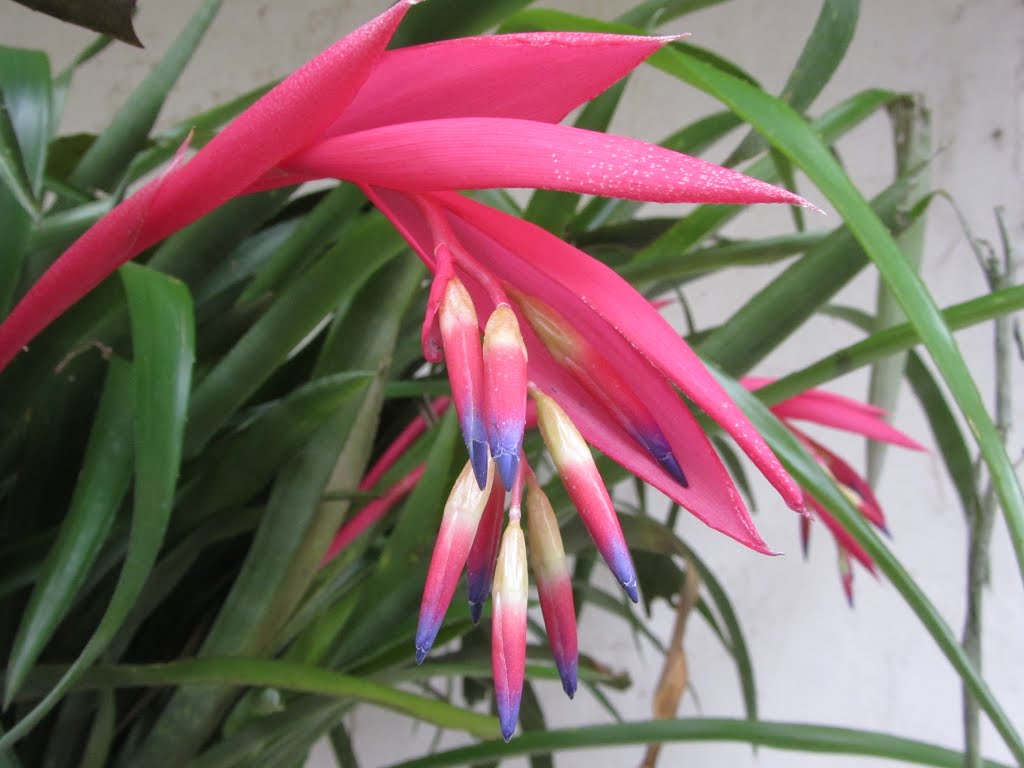
Billbergia nutans (Queen’s Tears)- Native to South America. It is capable of being grown on the side of another plant as a non-parasitic life form, or in a pot of soil on its own. Either way, its roots always remain shallow and it takes the majority of its moisture from the leaves and flowers.

Cryptanthus bivittatus (Pink Star)- Native to South America. Cryptanthus is a genus of plants found in the Bromeliaceae family. Cryptanthus bromeliads are unique in that they only grow terrestrially as opposed to many other bromeliads that can grow mounted on a substrate.
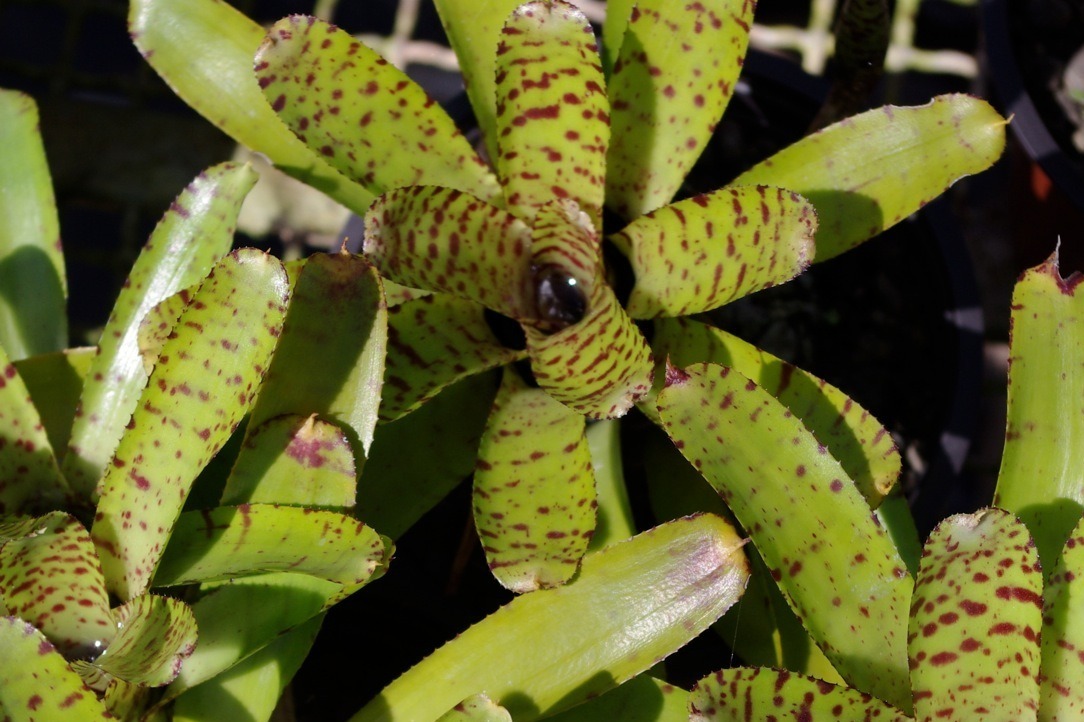
Neoregelia ampullacea (Mini Bromeliad)- Native to Brazil. Stays small and has long runners that produce new offsets, the same as most of the other Mini Neos.
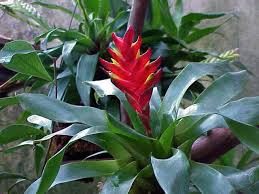
Vriesea splendens (Flame Sword Bromeliad)- Native to Trinidad. Flaming sword is a bromeliad with generally lance-shaped or linear foliage 8 – 24 inches long that is green or purplish often with cross bands of dark brown.
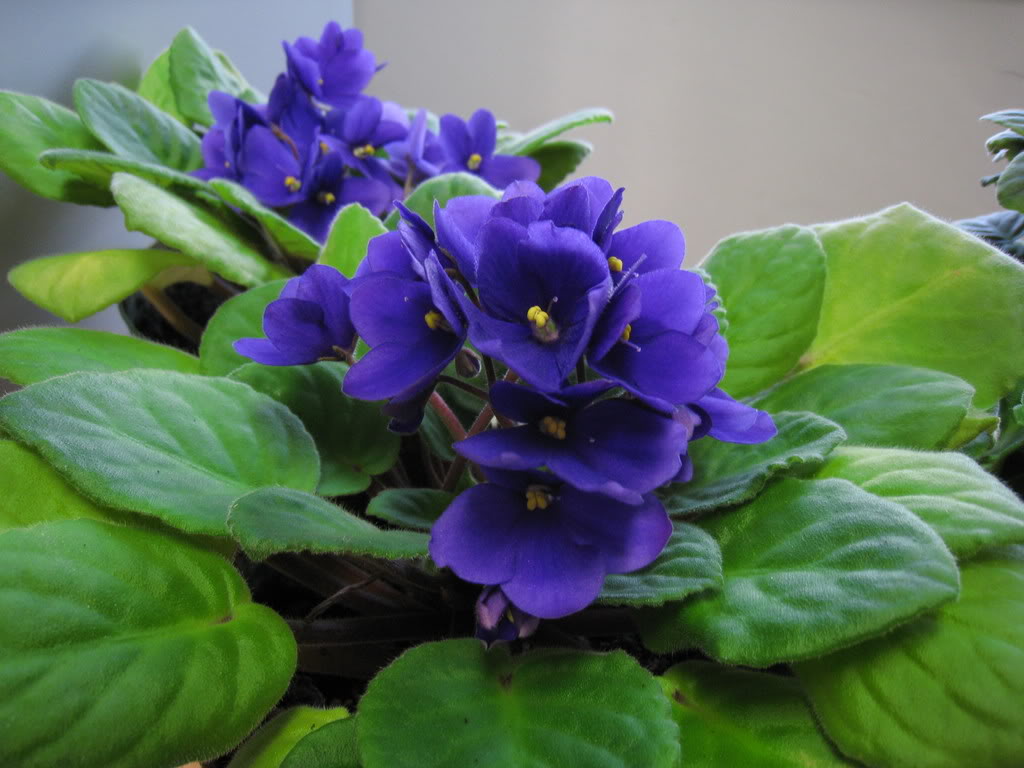
Saintpaulia hybrids (African Violet)- Native to Eastern Africa. To date, there are 21 species, six variants, and two natural hybrids of African violets have been identified in the wild. Each species has its own specific habitat unique to East Africa.
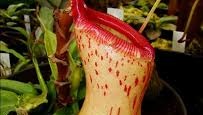
Nepenthes ventricosa (Asian Pitcher Plant) -Native to the Philippines. In the tropical forest, the pitchers attract insects. Once they crawl in, they never get out.
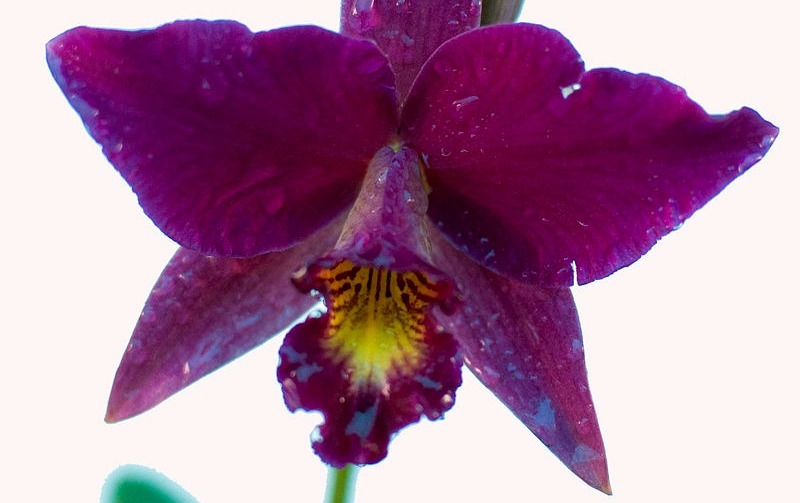
Orchid sp.- Native to all over the world. Along with the Asteraceae, they are one of the two largest families of flowering plants, with between 21,950 and 26,049 currently accepted species, found in 880 genera.
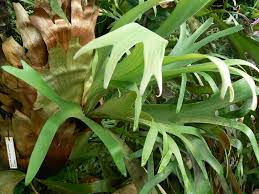
Native to New Guinea. The Elkhorn fern is an epiphyte, growing on the trunks and branches of trees. Each plant is composed of a mass of plantlets.
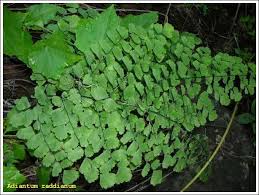
Adiantum cuneatum (Maidenhair Fern)- Native to South America. This evergreen fern, sometimes referred to Adiantum raddianum, has small, triangular-shaped leaves, gracefully attached to black-stalked fronds which grow to 2 feet tall.
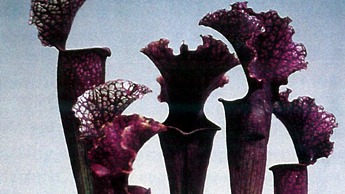
Pitcher plants are described as carnivorous plants because they trap and kill insects by luring them into trumpet-shaped pitchers where the insects become trapped and die. Nutrients from the decayed pest bodies are absorbed by the plant as nourishment through special cells located at the base of each pitcher.
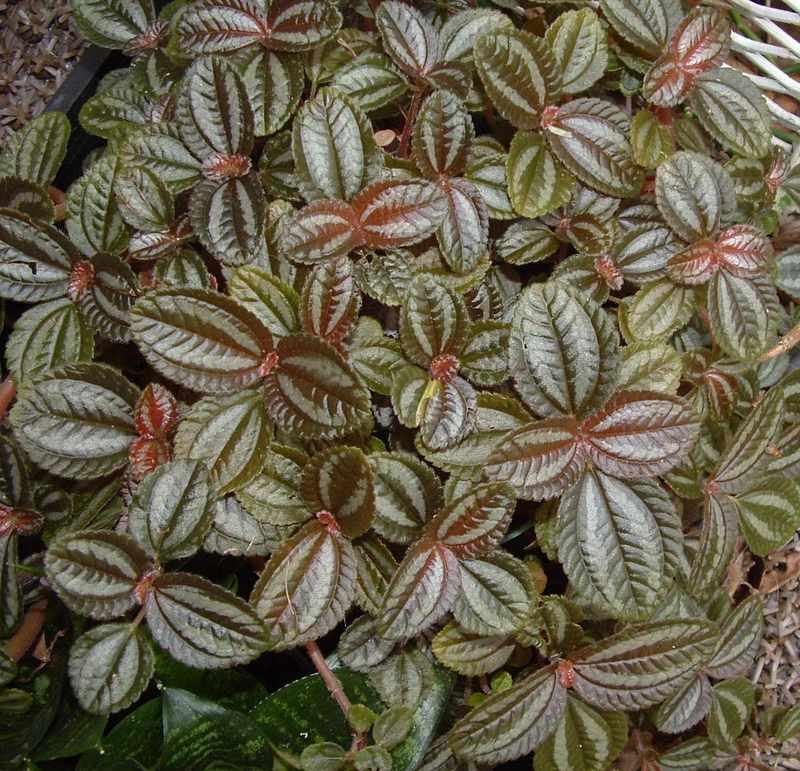
Pilea involucrata ‘Norfolk’ (Friendship Plant) –Native to America. Pilea is found in rainforests throughout the world,except in Australia. There are around 600 known species.
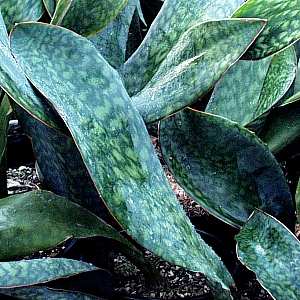
The wide, stiff, waxy, mottled leaves will grow quite large if given the room; there are reports of it getting to 6 feet tall though we have yet to see it quite this big - usually seen at 3 to 4 feet in height and younger nursery plants that are regularly divided often remain around 2 feet and not vertically inclined for several years before new taller leaves emerge.
Terrarium Construction
ZOO MED™ HYDROBALLS™ are used to help with humidity (gauge used to monitor humidity, not pictured) and water filtration. This is known as a false bottom. A screen is used to help prevent the HYDROBALLS™ and substrate from mixing.
Eco Earth® Coconut Fiber Substrate is the next layer. Bark is added to create pockets so that air can flow down to the roots of the plants. This layer is where the plants will be put, along with the other features.
Plants, features, and water dish are added. Lids were added to secure the toad, holes were drilled into the lid to allow proper airflow. (not pictured)
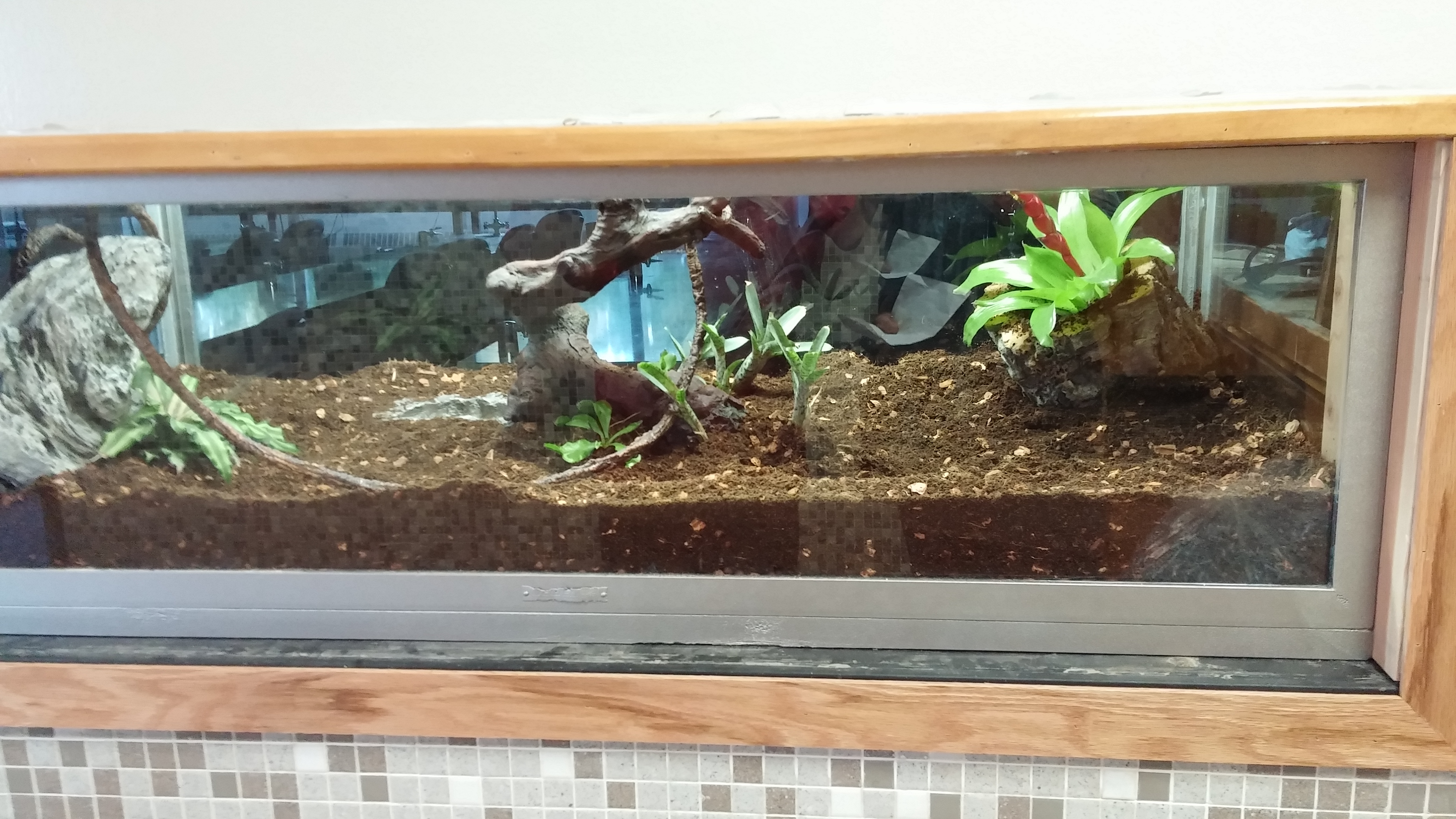
View from the front
More plants added as well as green moss to help lock in humidity.
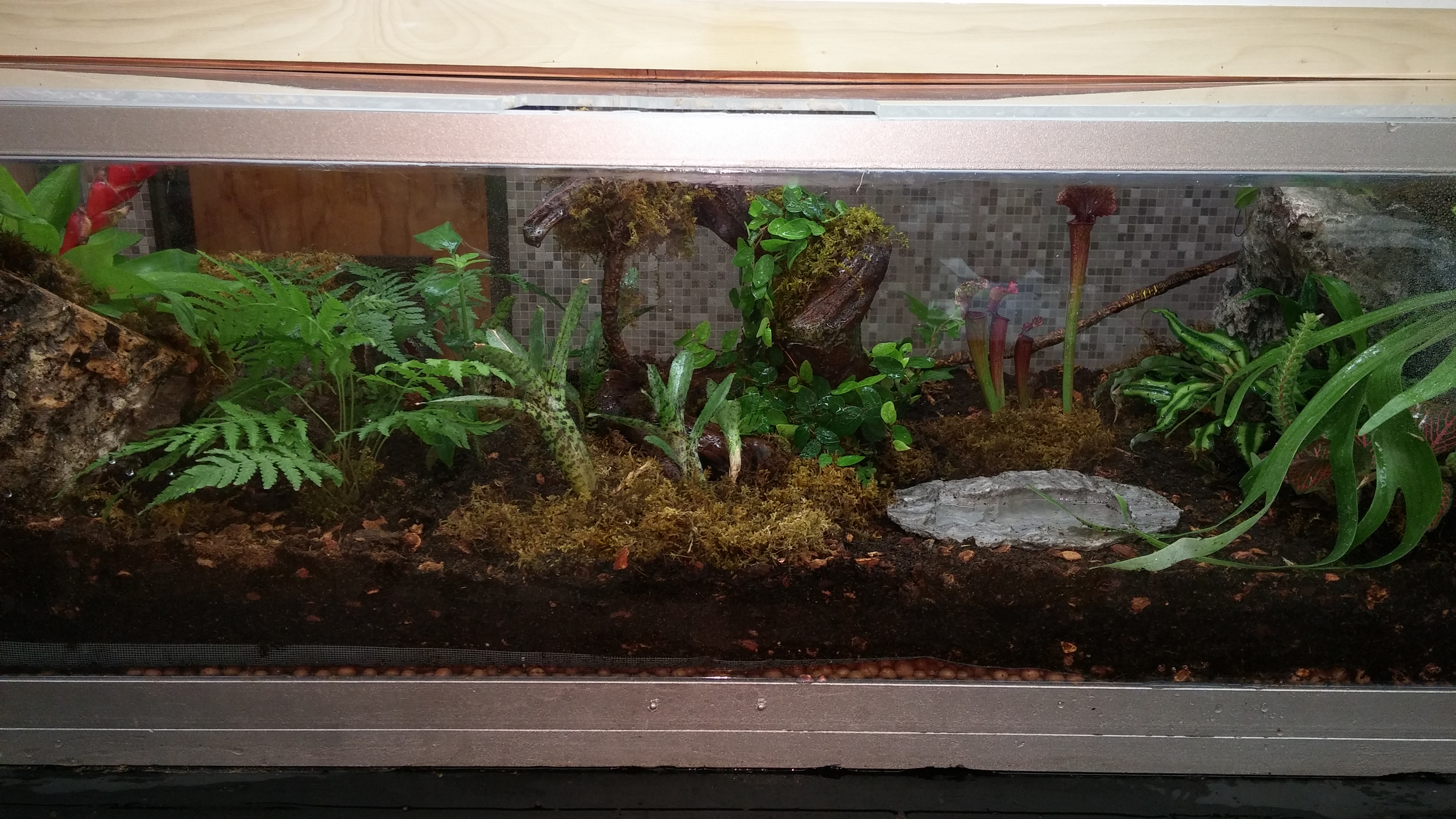
Finished view from the lab side
